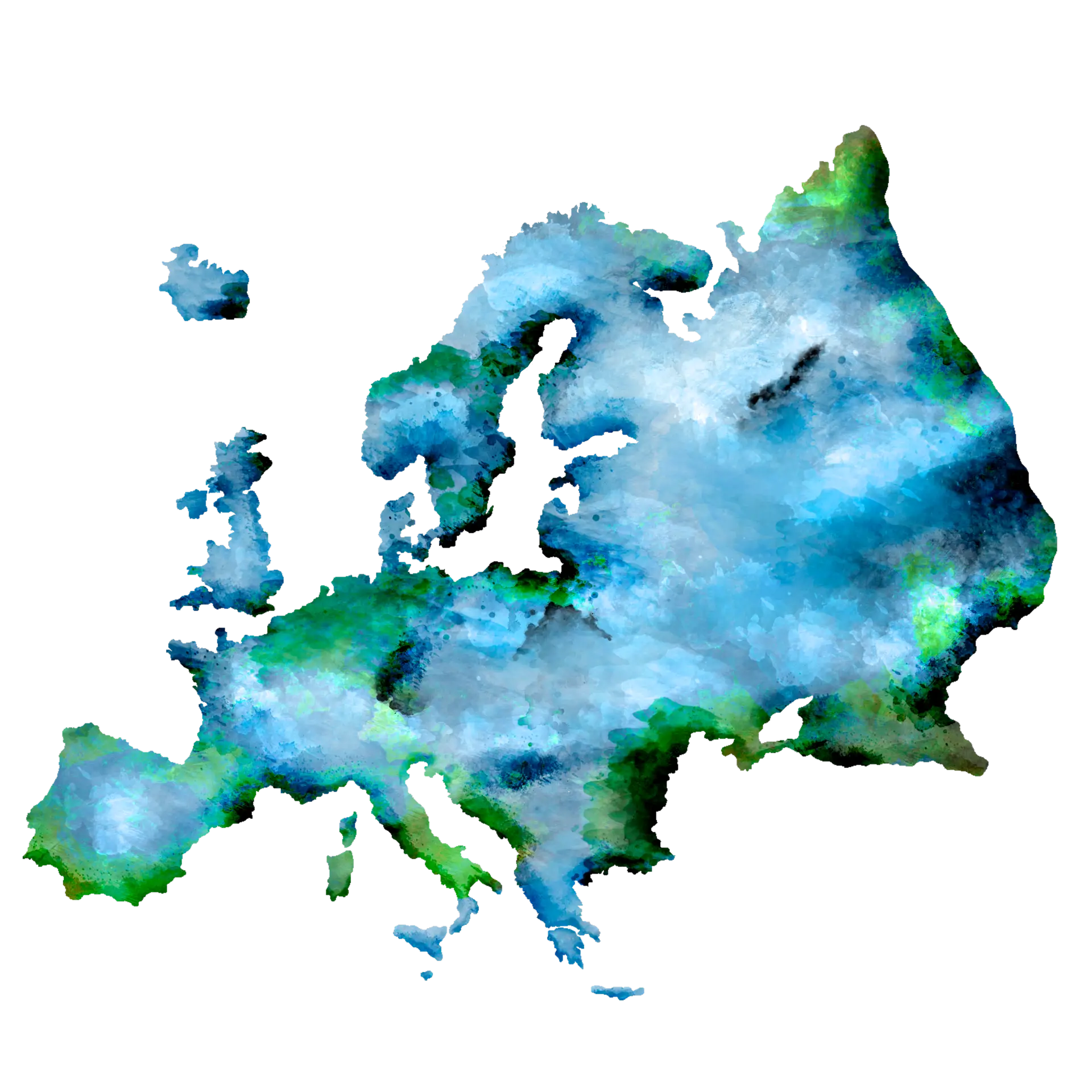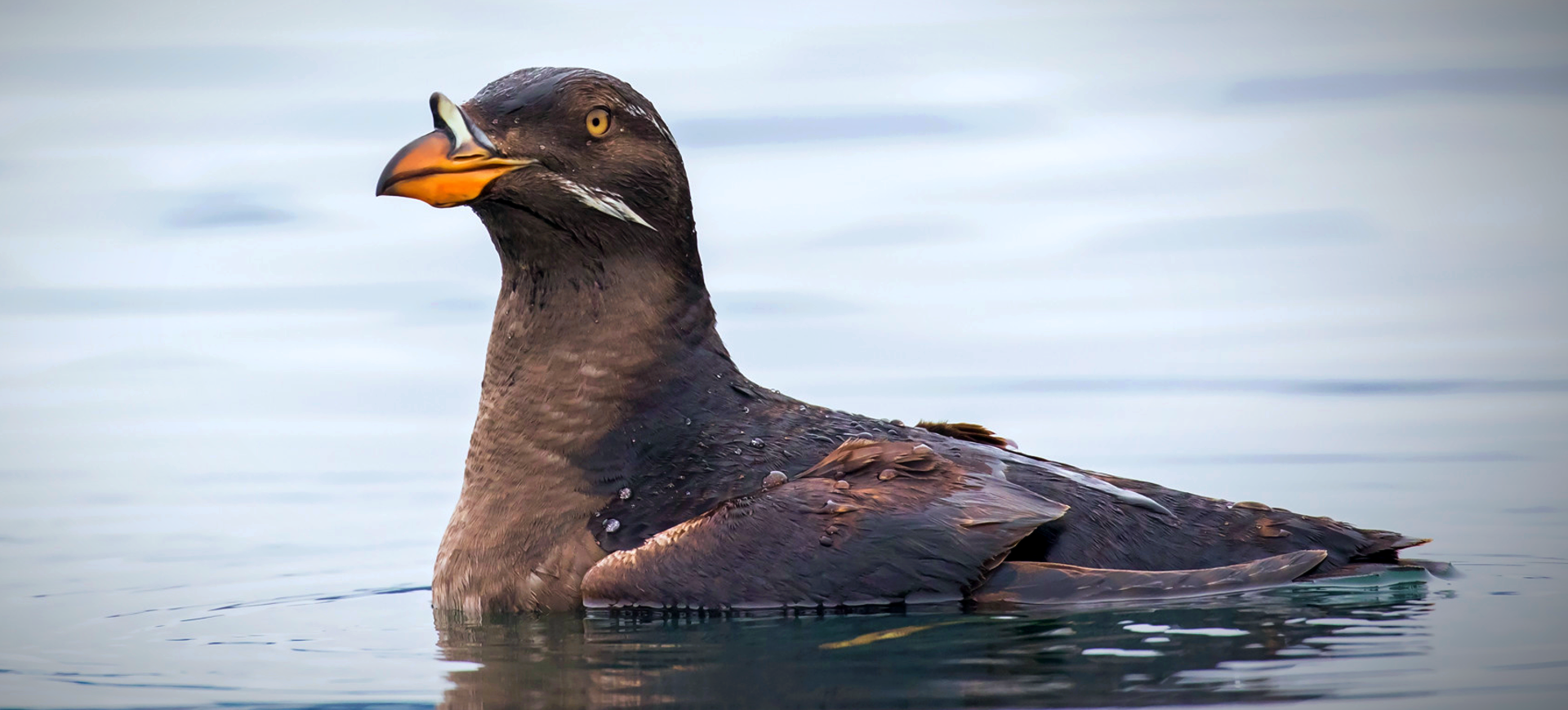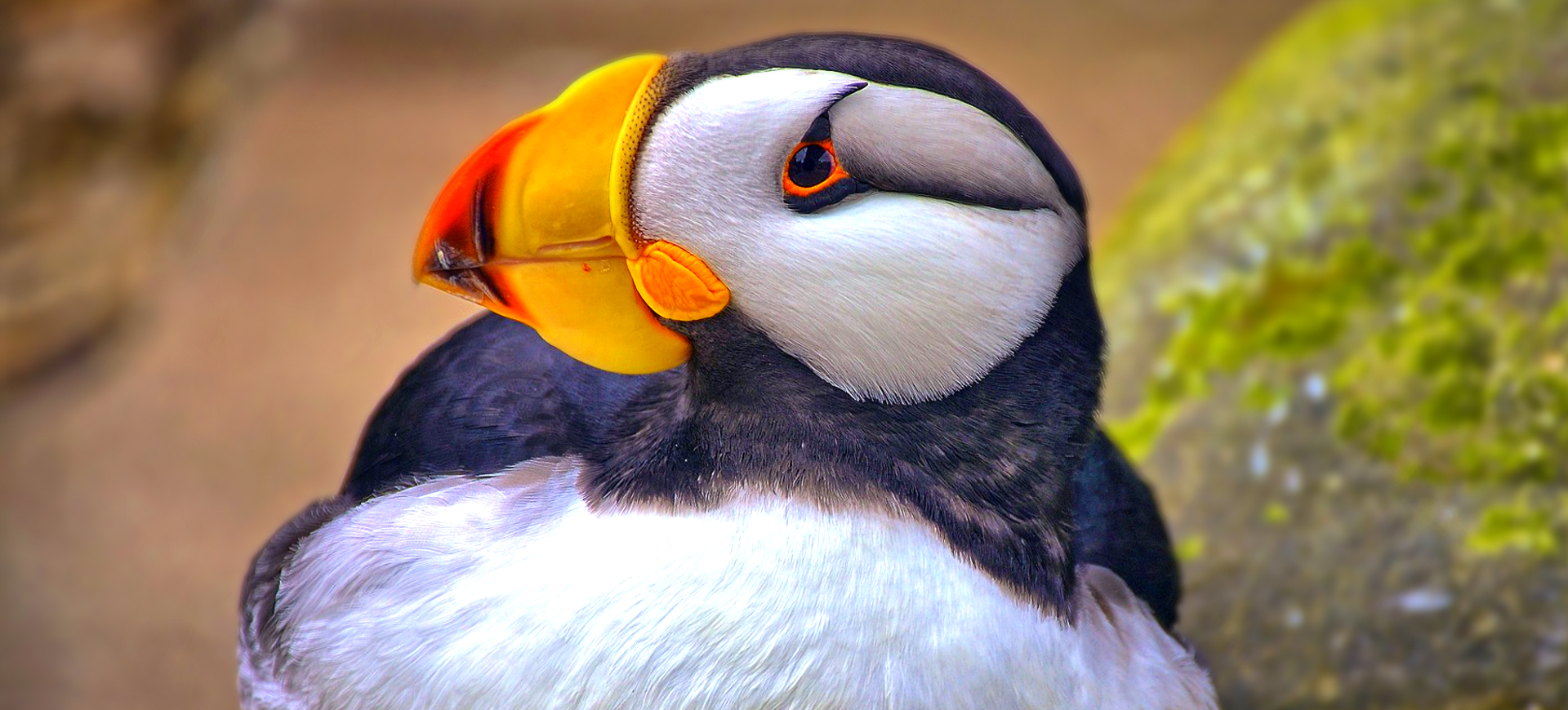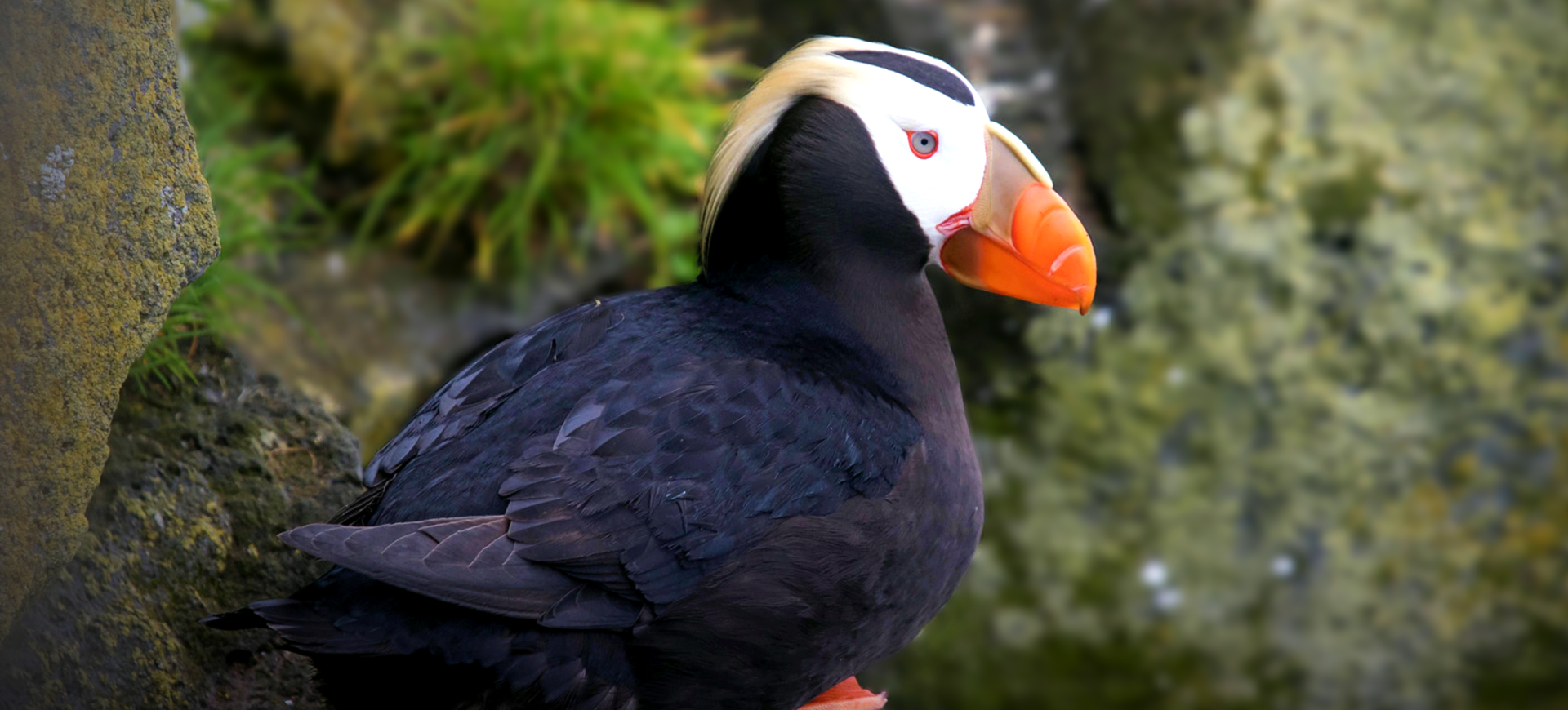Overview
Atlantic Puffins are small, charismatic seabirds known for their colorful beaks and remarkable diving abilities. These birds are part of the auk family, characterized by their black and white plumage, with a distinctive orange, yellow, and grey beak during the breeding season. They spend most of their life at sea, only coming to land to breed in large colonies on northern Atlantic coastlines and islands. Their ability to flap their wings up to 400 times per minute allows them to fly at speeds up to 55 miles per hour, making them adept at evading predators.
Atlantic Puffins are skilled divers, using their wings to ‘fly’ underwater while hunting for fish, their primary diet. These birds can carry multiple fish crosswise in their beaks, thanks to their unique hinge mechanism that allows the upper and lower bill to meet at different angles. Breeding pairs often return to the same nesting site each year, laying a single egg in burrows on cliff edges or crevices. The parents take turns incubating the egg and feeding the chick until it is ready to fledge and go to the sea.
The life of an Atlantic Puffin is a cycle of survival and fidelity, with birds traveling vast distances across the North Atlantic outside the breeding season. They face several natural predators, including large seabirds and mammals, but human activities have introduced additional threats. Despite these challenges, puffins form tight-knit communities during the breeding season, engaging in social behaviors such as bill-tapping and mutual preening, strengthening pair bonds and social cohesion within the colony.
Taxonomy
Kingdom
Phylum
Class
Order
Family
Genus
Species
Type
Current distribution:
Atlantic Puffins are found across a wide expanse of the North Atlantic Ocean, from the coasts of North America to Europe and the Arctic. Their breeding colonies are located on isolated islands and coastal cliffs, with minimal human disturbance. Despite facing habitat loss and changes in prey availability, puffins continue to inhabit a broad geographic range, showcasing their adaptability to varying environmental conditions.
The distribution of puffin colonies can fluctuate based on environmental factors and food availability. Conservation efforts have succeeded in stabilizing or even increasing puffin numbers in some areas. However, populations have declined in other regions due to overfishing, pollution, and climate change. The ongoing monitoring and protection of breeding sites are crucial for conserving this species, ensuring that puffins have safe havens for breeding and raising their young.
Physical Description:
Atlantic Puffins are distinguished by their small stature, measuring about 10 inches in height, with a wingspan of approximately 20 to 24 inches. They exhibit striking black and white plumage year-round, but it is their brightly colored beak that is most noticeable during the breeding season, which fades to a dull gray during the winter. Their legs and feet are also brightly colored, ranging from orange to red, which adds to their distinctive appearance. The waterproof quality of their feathers keeps them dry and insulated in cold ocean waters.
Male and female puffins are similar in appearance, making it challenging to distinguish between the sexes based on looks alone. Both sexes undergo a molt after the breeding season, shedding their flight feathers, which renders them flightless for a period. During this time, they are particularly vulnerable to predators. Their body is perfectly adapted for a life spent mostly at sea, with dense bones that allow them to dive deep and powerful flippers for swimming.

Lifespan: Wild: ~20 Years || Captivity: ~25 Years

Weight: Male & Female: 17.6-20 oz (500-570 g)

Length: Male & Female: 11-12 in (28-30 cm)

Height: Male & Female: 8-10 in (20-25 cm)

Wingspan: Male & Female: 20-24 in (51-61 cm)

Top Speed: 55 mph (88 km/h)
Characteristic:
Native Habitat:
Atlantic Puffins breed on rocky islands and coastal cliffs across the North Atlantic. Their preferred breeding sites are characterized by grassy or sandy soil where they can dig burrows for nesting. These habitats offer protection from predators and proximity to their feeding grounds in the ocean. Puffins are well adapted to life at sea, where they spend most of their lives outside the breeding season, navigating the open waters of the North Atlantic.
The natural range of the Atlantic Puffin includes the coasts of northern Europe, the northeastern United States, Canada, and the Arctic Circle. They are particularly associated with islands off the coasts of Norway, Iceland, Greenland, and the British Isles. These areas provide the necessary conditions for breeding and access to abundant food resources in the surrounding seas. Puffins are highly adapted to the harsh conditions of their marine environment, demonstrating remarkable resilience and adaptability.
Climate Zones:
Biomes:
Biogeographical Realms:
Continents:
Diet:
Diet & Feeding Habits:
Atlantic Puffins are piscivorous, primarily feeding on small fish such as sand eels, herring, and capelin. Their hunting method is unique; they dive into the water from the air and use their wings to ‘swim’ underwater, catching fish by snapping them up with their beaks. Puffins can dive to depths of over 200 feet, although most fishing occurs much closer to the surface. They have the remarkable ability to hold several fish in their beaks at once, allowing them to bring back a substantial meal to their chicks or mates.
The diet of puffins varies depending on the availability of fish in their feeding grounds. During the breeding season, they spend considerable effort returning food to their nestlings, making multiple daily trips. The conservation of energy is crucial for puffins, reflected in their feeding behavior; they seek out dense schools of fish to minimize the energy spent on hunting. Environmental changes affecting fish populations can significantly impact puffin colonies, as these birds rely on a steady food supply to breed successfully.
Mating Behavior:
Mating Description:
Atlantic Puffins form monogamous relationships, often reuniting with the same partner each breeding season. These bonds are reinforced through behaviors such as bill-tapping and mutual preening. The breeding season begins in late spring or early summer when puffins return to their nesting sites on coastal cliffs and islands. Here, they engage in courtship displays and nest-building, preparing caves where they will lay their single egg.
The female lays one egg annually, which both parents incubate for around 42 days. After hatching, the chick, known as a puffling, is fed by both parents, who bring small fish back to the burrow. This intense care period continues until the puffling is ready to fledge, about 6 weeks after hatching when it leaves the nest under darkness to avoid predators. The chick’s survival heavily depends on food availability and the parents’ success in foraging.
Reproduction Season:
Birth Type:
Pregnancy Duration:
Female Name:
Male Name:
Baby Name:
Social Structure Description:
Outside the breeding season, Atlantic Puffins are largely solitary, spending their time at sea where they hunt and navigate the vast ocean. However, they form large, dense colonies on coastal cliffs and islands during the breeding season. These social structures are crucial for their survival, providing protection against predators and opportunities for mating.
Puffins exhibit various social behaviors within these colonies, including communal feeding and cooperative defense against threats. The strong pair bonds formed between mating puffins are a key component of their social structure, with pairs often reuniting year after year to breed. The social dynamics of puffin colonies, including hierarchy and territory, play a vital role in their breeding success and overall well-being.
Groups:
Conservation Status:
Population Trend:
Atlantic Puffin populations are currently facing several challenges that threaten their long-term survival. The most significant threats include loss of breeding habitat, overfishing, and climate change, which affect the availability of their primary food sources. These factors can reduce breeding success and lower chick survival rates, impacting overall population numbers.
Efforts to monitor puffin populations have indicated fluctuations in numbers across their range, with some colonies experiencing significant declines. These trends concern conservationists, who emphasize protecting critical habitat areas and ensuring sustainable fishing practices. The resilience of puffin populations depends on a complex interplay of environmental conditions and human activities, highlighting the need for comprehensive conservation strategies.
Population Threats:
Atlantic Puffins face numerous threats, including predation by gulls and foxes, which can decimate unprotected nesting colonies. Human activities pose significant risks, such as pollution, which can lead to oil spills contaminating their feeding waters. Climate change also affects sea temperatures and fish populations, disrupting puffin food supplies and breeding patterns.
Overfishing is another critical threat, reducing the availability of small fish that puffins rely on for feeding their chicks. Habitat destruction and disturbance from tourism can also impact breeding colonies. Addressing these threats requires coordinated conservation efforts, including marine protected areas, sustainable fisheries management, and awareness campaigns to reduce human disturbance at breeding sites.
Conservation Efforts:
Conservation initiatives for Atlantic Puffins include habitat protection, research, and monitoring programs. Organizations like the Audubon Society and BirdLife International work towards safeguarding important breeding sites and advocating for marine conservation policies. Restoration projects have also successfully reintroduced puffins to historic ranges where they had disappeared.
Education and awareness campaigns are crucial in puffin conservation, promoting responsible tourism and highlighting the importance of reducing ocean plastic pollution. Efforts to combat climate change and regulate fishing practices are essential to ensure the long-term survival of puffin populations. The collaborative work of conservationists, governments, and local communities offers hope for the future of Atlantic Puffins.
Additional Resources:
Fun Facts
- Puffins use their colorful beaks and feet to attract mates during breeding.
- They can carry up to 10 fish in their beak at once due to a unique arrangement of spines on their palate.
- Puffins are excellent swimmers, using their wings to propel themselves underwater.
- They can live up to 20 years in the wild, showcasing remarkable longevity for birds of their size.
- The puffin’s beak changes color during the year, brightening during spring and fading to gray in winter.
- They are known as “clowns of the sea” due to their colorful appearance and amusing behaviors.
- Puffins have a special joint in their jaw that allows them to open their mouth while holding several fish.
- They flap their wings up to 400 times per minute when flying, similar to hummingbirds.
- Atlantic Puffins are the only puffin species found in the Atlantic Ocean.
- Pufflings stay in their burrows for about 6 weeks before venturing out to sea alone.












